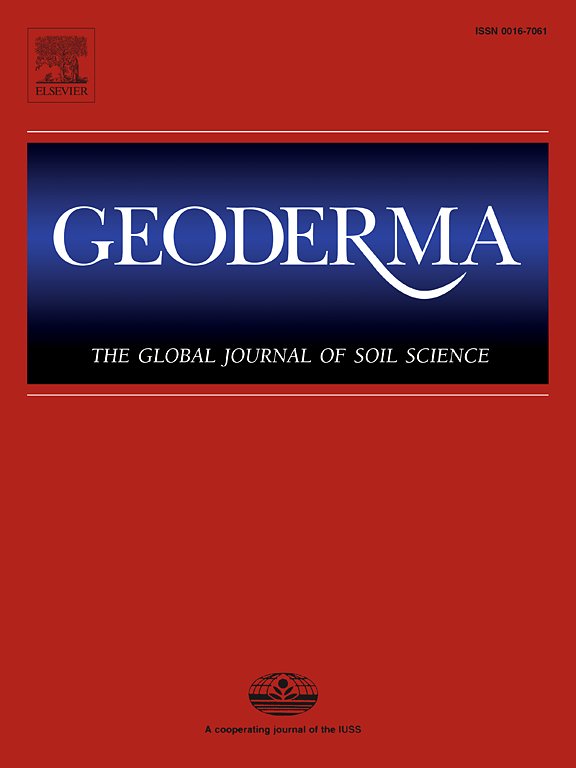Creating soil districts for Australia based on pedogenon mapping
IF 5.6
1区 农林科学
Q1 SOIL SCIENCE
引用次数: 0
Abstract
Soil is a highly diverse natural resource crucial for the functioning of ecosystems and essential for ensuring food security, biodiversity, water quality, and climate regulation. Despite its significance, soil faces increasing degradation pressures from agriculture, urbanisation, and climate change. Previous work has classified soil into pedogenons—homogeneous groups based on soil-forming factors similarity. These maps are valuable for evaluating soil condition and anthropogenic impacts, distinguishing less affected areas (genosoils) from more impacted areas (phenosoils). However, the large number of pedogenons in a region can complicate management, monitoring, and legislation. To address these challenges, we propose a methodology for designing soil districts that: i) utilises pedogenon spatial information to create compact and contiguous soil districts, ii) groups pedogenons based on soil-forming factor similarities and geographic location, and iii) provides a set of descriptors to explain the composition and characteristics of each soil district.
Applying this methodology, we created 236 soil districts from the pedogenon map of Australia, forming units that can be used for legislative and monitoring purposes depending on stakeholders’ needs. The median size of these districts is 22,000 km2.

基于土壤分布图为澳大利亚创建土壤区
土壤是一种高度多样化的自然资源,对生态系统的功能至关重要,对确保粮食安全、生物多样性、水质和气候调节至关重要。尽管土壤具有重要意义,但由于农业、城市化和气候变化,土壤面临着越来越大的退化压力。以往的研究基于土壤形成因子的相似性将土壤划分为土壤成壤同质类群。这些地图对于评估土壤状况和人为影响有价值,区分受影响较小的地区(基因土壤)和受影响较大的地区(表型土壤)。然而,一个地区的大量土壤会使管理、监测和立法复杂化。为了应对这些挑战,我们提出了一种设计土壤区的方法:i)利用土壤区空间信息创建紧凑和连续的土壤区,ii)基于土壤形成因子相似性和地理位置对土壤区进行分组,以及iii)提供一组描述符来解释每个土壤区的组成和特征。
本文章由计算机程序翻译,如有差异,请以英文原文为准。
求助全文
约1分钟内获得全文
求助全文
来源期刊

Geoderma
农林科学-土壤科学
CiteScore
11.80
自引率
6.60%
发文量
597
审稿时长
58 days
期刊介绍:
Geoderma - the global journal of soil science - welcomes authors, readers and soil research from all parts of the world, encourages worldwide soil studies, and embraces all aspects of soil science and its associated pedagogy. The journal particularly welcomes interdisciplinary work focusing on dynamic soil processes and functions across space and time.
 求助内容:
求助内容: 应助结果提醒方式:
应助结果提醒方式:


